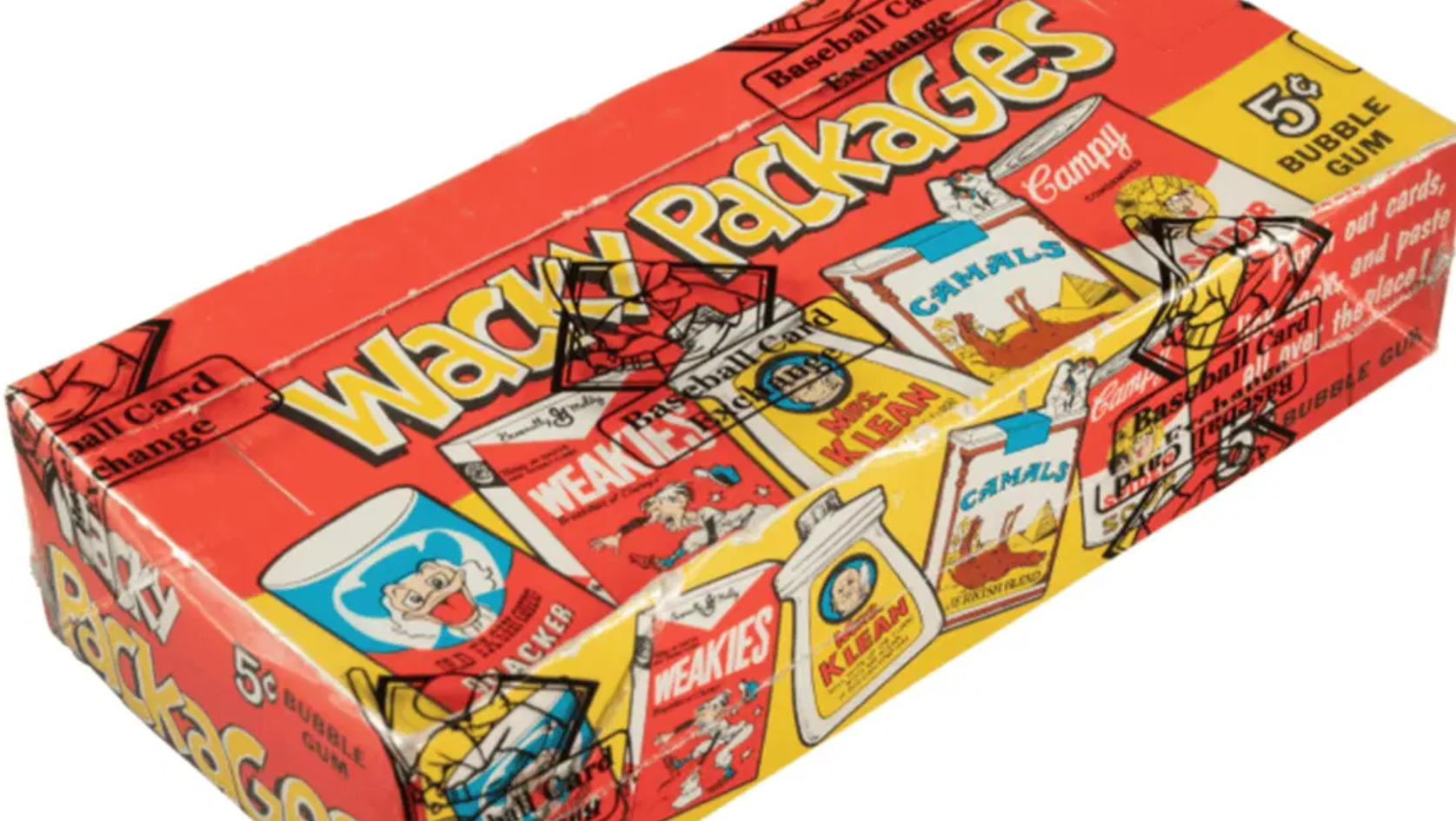The audacious world of vintage pop culture paraphernalia has just seen once again its vibrant colors and quirky humor etching a new mark on the auction timeline. At the forefront of this palpable resurgence is the iconic 1967 Wacky Packages, a masterpiece in the world of parody art. This sensational set of satirical stickers by Topps recently skyrocketed to an astonishing sale price of $79,300 at Heritage Auctions. This isn’t just a mere record, it jauntily surpasses its predecessor, a $63,084 auction result in 2022, by a comfortable margin that has propelled it into the financial stratosphere of non-sports collectibles.
Emerging from the Boomer-era of commercial consumerism, Wacky Packages dared to lampoon beloved grocery brands by transforming them into playful, cartoon-inspired twists that took a sharp dig at the increasingly advertising-drowned culture of the time. Upon their release in 1967, the cards landed with the force of a comedic left hook, resonating hilariously with young consumers. They became a collectible affair, offering artwork contributed in part by the now-legendary Art Spiegelman. Spiegelman’s name still sings through the annals of graphic artistry, later winning a Pulitzer Prize for his work on Maus. Yet, in these early days of his illustrious career, his drawings were part of a broader cultural canvas, preparing children with peel-and-stick wit for a world not afraid to poke fun at itself.
These first-series cards were tactile creatures, punch-outs meant to be licked like delightful stamps and then embellish anything from school binders to bedroom doors. This tangible interaction was part of their magic. They weren’t just look-at-me collectibles; they were consumable, expressive tokens of childhood entertainment cultures, waiting to be given life across myriad surfaces.
However, the story was not without its hiccups, which required the deft movements of commercial and legal gymnastics. Many parodied brands—including household staples like Ritz, Jolly Green Giant, Morton Salt, and 7-Up—did not partake in the joke, quite obviously unamused about flying too close to the satire sun. They swooped down with legal threats that prompted Topps to perform a strategic swap-out, expanding the line from the initial 44 cards to a meticulously revised 56. Once the litigious twilight faded, Topps doubled down on their risqué relish for satire. In 1969, “Wacky Ads” surfaced, later followed by a rebound in 1973 with an assortment of peel-and-stick stickers. During this era, Wacky Packages rivaled even the esteemed baseball cards in schoolyard trades and playground prestige.
Over time, as all cherished things might experience, the production of this whimsical world took a hiatus spanning from 1992 to 2004. Yet, like the culturally resilient species they are, Wacky Packages reappeared, latching onto their cult status with a thirst for nostalgia and a dedicated following that cherishes them as treasured relics of pop culture past. Through the waxing and waning cycles of collectibles, these packs are buoyed by a unique creative spirit, a sense of ‘remember when’ that irresistibly pulls collectors and cultural harkers back in.
The record-setting auction is a compelling billboard of notice, emblazoned with a message to collectors and pop culture historians alike: Vintage non-sports cards and unopened boxes, especially those that weave together nostalgia with elements of iconic humor, continue to captivate eyes and gather hands that cherish them deeply. They stand as monuments to a history that’s less about economics and more about the wit and satirical creativity that reflects powerful societal undertones. They are not just pieces of cardboard and plastic but living chapters of historical imagination, inviting expansion in delightful galleries of memory and laughter.
As observed in this defining piece of auction history, there is still a potent market for comedic nostalgia and pop culture history. Such trinkets and cards remind us of a time when commercial paradise was disrupted by the simple act of flipping a card. It ties collectors of old and new together through a medium that never loses its luster or its quirky, spirited, and satirical foundation that continues to challenge, entertain, and transcend the very brands it once mimicked.
